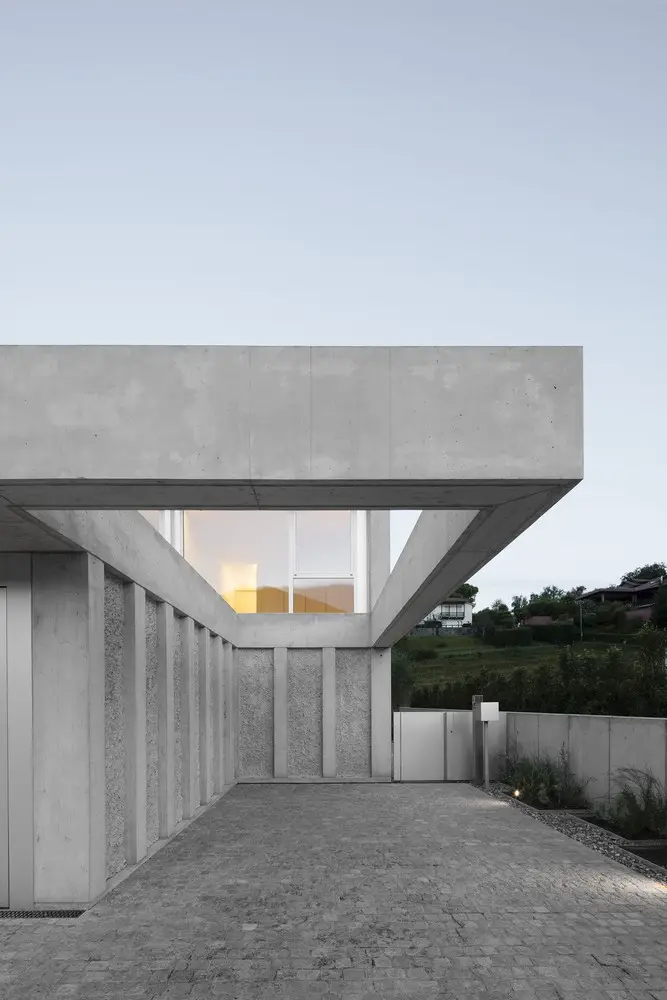Using Concrete in Architecture Advice, Building Construction Material Tips, Structure build guide
Using Concrete in Architecture
20 July 2020
To an architect, concrete is one of the most important building materials. Compared to other materials, concrete gives architects a lot of freedom, which allows them to come up with eye-catching designs and results. Concrete can be used in different types of projects including infrastructure, residential and commercial projects.
Below, we will look at some tips that will help architects work better with concrete to end up with the desired results. Despite its many desirable qualities, concrete requires considerable skill to work with. Polishing concrete especially requires specialised concrete training courses.
Consider How Much Exposure the Structure Will Be Subjected To
Concrete is the perfect building material for structures that do not need any lining once the project is done. The end result of this is that the structure will be subjected to the elements which can have a detrimental effect on its longevity and ability to keep its look. It is, therefore, important that an architect considers the different weather elements the concrete will be subject to.
It is also important that an architect works closely with the contractor to ensure the composition of the concrete is right. This allows for optimal workability and reduces the chances of getting pores and crevices in the structure.
An architect’s design can also help protect the structure from the elements. For example, the use of eaves helps prevent against humidity and the problems its accumulation on a concrete surface can cause.
Specify What Protections You Need
Concrete is porous, and because of this, you might need to use varnish, resin or water-proofing to protect it against tear and wear. Although there are many different products you could use for this purpose, it is always a good idea to talk to a technical consultant so that you get optimal results.
Some of the products that are applied to the concrete once it dries have little effect on its appearance, while others intensify its tone or increase its brightness. When choosing the resins and varnishes to protect the concrete structure, you need to consider if the specific products you use will protect against water damage, acid rain, corrosives and mould.
Many architects and contractors pre-emptively use fungicides, sealants, and antibacterial products if there is a risk of leaks or mould infestation. A damp proofing specialist can help if a damp problem arises.
Protect the Underlying Metalwork
An architect and the contractor they are working with should take measures to ensure the underlying metalwork is never exposed to water or other elements. If this is not done, the metalwork can be compromised, which would lead to a weakening or failure of the structure.
It is recommended that you use the dimensions of the project and a concrete calculator to know the exact amount of concrete you will need to ensure the underlying metalwork is covered completely. A concrete calculator UK will come in handy for most sections of the project, but it is also a good idea to use a screed calculator to calculate the amount of extra concrete you need for the floors.
Floors are subject to the most wear and tear, so protecting their underlying metalwork is much more important. The good news is that you can calculate the amount you need at MixIt. Once you have used their concrete mix calculator to find out how much concrete you will need, they can mix the concrete at their facilities and transport it to your project’s site.
Choose the Right Framework for the Project
A framework is used to support the mixture of cement, sand and water until it is dry. The framework gives the concrete its shape once it is dry, so it should be chosen according to the look the client and the architect are trying to achieve. The framework can be built using different materials, with each of these materials yielding different looks and textures.
Wooden frameworks are the most common type of material used. A wooden framework is usually made up of individual planks or boards. If using individual boards, it would be a good idea to take advantage of the knots found on the boards to give the finish a unique look. Planks give a smoother finish. The boards can be laminated or have resin applied to them to give a smoother and uniform finished appearance. If the wooden framework is treated well before and after the project, it can be reused which saves money on larger projects.
Metal frameworks have proven to be far superior to wood frameworks. Metal frameworks can be utilised many different times, are not damaged by water, and are faster and easier to set up. When you use a metal structure, you do not need to think about the smoothness of the end product or any defects as you would with a wooded framework. Metal structures are recommended for bigger projects as they increase productivity through the amount of time you save setting them up and dismantling.
Grey or Coloured Concrete
Although a lot of people love concrete’s grey colour for the exterior, many people are turning to pigmented concrete. It is common to see red, yellow, green or even black walls and structures. To protect the structure, you also have the option of choosing water-resistant colouring material. This makes it easier to make the completed project stand out while protecting it from water damage.
The colouring material does not impact the concrete’s properties and it even maintains its colour when used in a dry concrete mix.
Correct Imperfections
Once the project is nearing completion, you should take one last look to see if there are any imperfections in the final product. Using a mixture of cement, water, acrylic that can be applied to the structure using a trowel to fix any pores, gaps or crevices will help correct any imperfections.
Know Every Detail Beforehand
Before commencing on any architectural project, it is important to have technical planning meetings before the project starts. The team can discuss every aspect of the project, including the ironwork, framework, how much concrete will be used, measuring dimensions for gutters, eaves, expansion joints as well as all other aspects of the project. Planning early will ensure you do not run into problems in the future which might be expensive and time-consuming to rectify.
Embrace Concrete’s Versatility
While concrete will be used for the main structure, it can also be used in other areas. These include outdoor furniture, walkways, and walls to section off the exterior compound.
Take Care of the Environment
Concrete produces a lot of waste and pollutes the environment in many ways. If you are mixing concrete on site, there is always the risk of breathing in cement dust, which is harmful. There is also the problem of wet cement and concrete polluting the surrounding areas.
Proper use of water during the project is a way to minimise the project’s impact on the environment. Using little water is part of sustainable construction strategies and the proper disposal of used and contaminated water will go a long way in ensuring your project has as little impact in the environment as possible.
Using Concrete in Architecture Conclusion
Concrete is the primary construction material for many reasons; it is easy to work with, strong and long-lasting, and can be used in projects that use simple or complicated architectural designs. Working with concrete is a very involved process as there is a lot to think about, including protecting the structure from the elements and protecting the underlying structure.
Comments on this guide to Using Concrete in Architecture article are welcome.
Concrete
3D Concrete Printed Building Den Helder NL
How Investing in Precast Concrete Can Benefit Your Business
Construction
Construction Posts
Building a Pedestrian Bridge Construction
Make Your Construction Fleet Efficient
5 reasons to use steel in residential construction
Comments / photos for the Using Concrete in Architecture Advice page welcome





